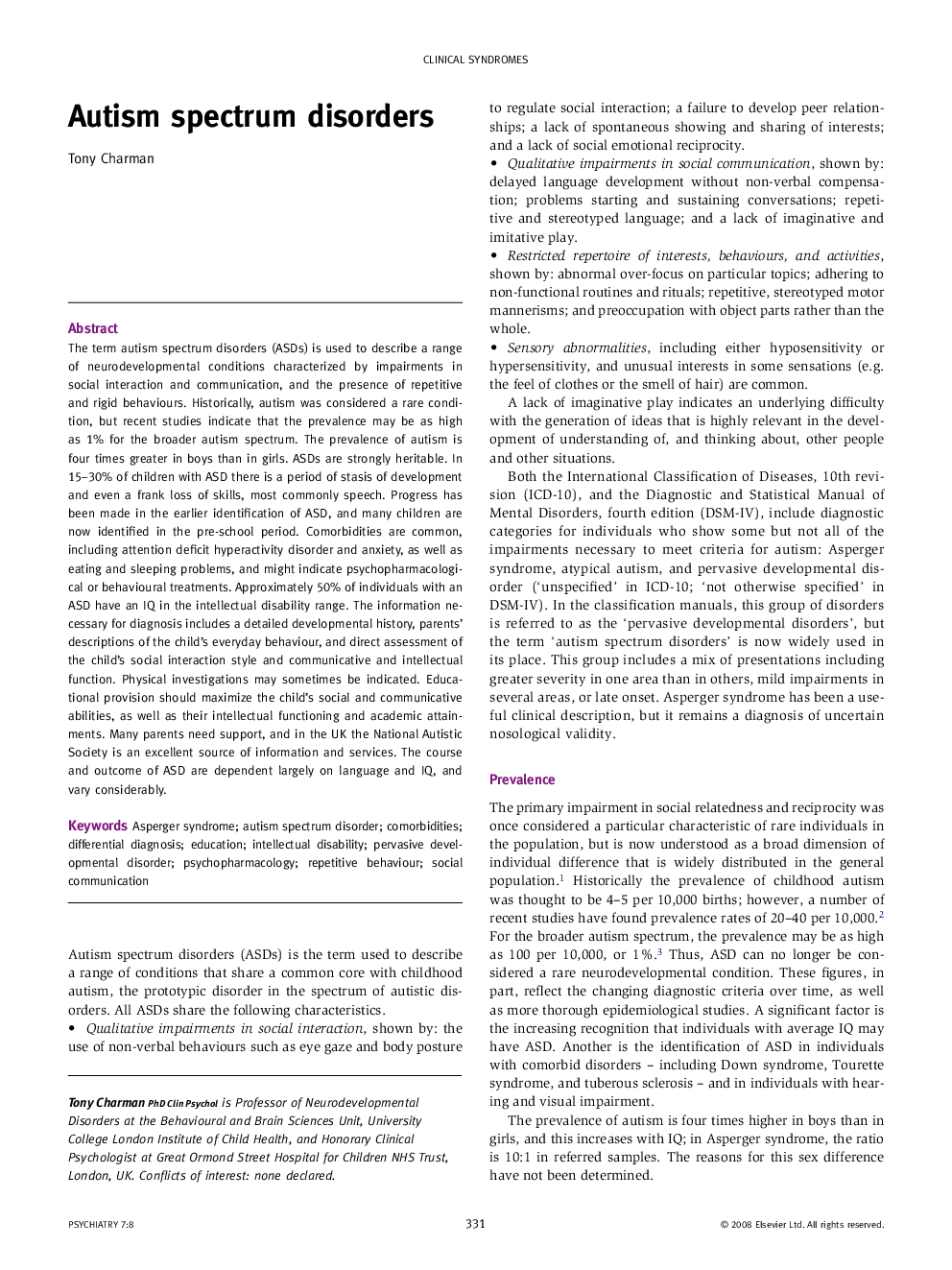| Article ID | Journal | Published Year | Pages | File Type |
|---|---|---|---|---|
| 4190018 | Psychiatry | 2008 | 4 Pages |
The term autism spectrum disorders (ASDs) is used to describe a range of neurodevelopmental conditions characterized by impairments in social interaction and communication, and the presence of repetitive and rigid behaviours. Historically, autism was considered a rare condition, but recent studies indicate that the prevalence may be as high as 1% for the broader autism spectrum. The prevalence of autism is four times greater in boys than in girls. ASDs are strongly heritable. In 15–30% of children with ASD there is a period of stasis of development and even a frank loss of skills, most commonly speech. Progress has been made in the earlier identification of ASD, and many children are now identified in the pre-school period. Comorbidities are common, including attention deficit hyperactivity disorder and anxiety, as well as eating and sleeping problems, and might indicate psychopharmacological or behavioural treatments. Approximately 50% of individuals with an ASD have an IQ in the intellectual disability range. The information necessary for diagnosis includes a detailed developmental history, parents’ descriptions of the child’s everyday behaviour, and direct assessment of the child’s social interaction style and communicative and intellectual function. Physical investigations may sometimes be indicated. Educational provision should maximize the child’s social and communicative abilities, as well as their intellectual functioning and academic attainments. Many parents need support, and in the UK the National Autistic Society is an excellent source of information and services. The course and outcome of ASD are dependent largely on language and IQ, and vary considerably.
